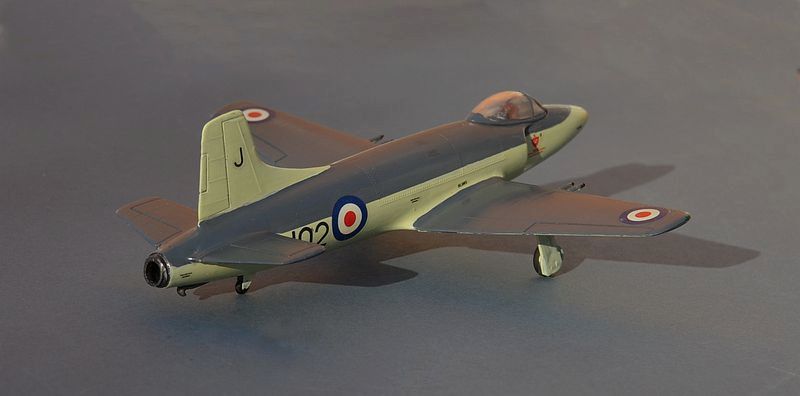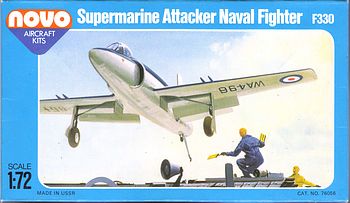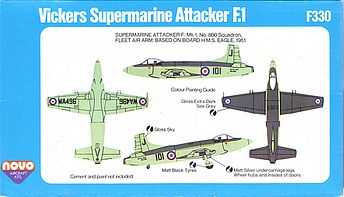Supermarine Attacker F.1
800 Naval Air Squadron,
HMS EAGLE, 1951.
FROG, with spare decals -
© www.gengriz.co.uk
After the heady days of the Spitfire family in WW2, Supermarine struggled with their transition into the jet age. Their main projects, the Attacker, Swift and Scimitar were all commendably advanced designs, but the fast moving pace of aviation (and in the case of the Swift, serious development problems) left all of them behind.
The Supermarine Attacker became the Fleet Air Arm’s first operational carrier based
jet fighter, entering front-
The initial F.1 variant was quickly upgraded to the FB.1 with underwing racks for unguided rockets. The definitive and final Attacker variant was the FB.2, with a more powerful Nene engine. After significant problems with the original canopy, a new one with framing and a covered rear section was added, with some retrofitted to earlier aircraft.
Ten FAA and RNVR sqns were equipped with the Attacker, but its operational effectiveness
was marginal at best, while the tail-
Cut-
Building the FROG Attacker kit:
One final build to end 2023 and this one definitely fits in the "nostalgia" category.
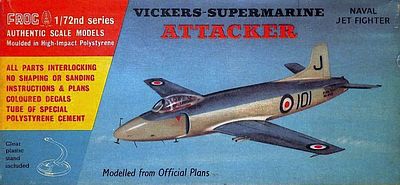
FROG's Supermarine Attacker kit was one of their earliest, first appearing in 1956 and seemingly with a remarkably long production run, with FROG until the late 1970s, then the NOVO and other USSR offshoots until the late 1990s and beyond! It really is a very basic kit, with only 14 parts and despite its claim to be "based on official plans" it isn't the most accurate around.
Mine came in an unmarked dirty bag of bits for £5 (which sounds a bit expensive)
almost a decade ago. Given the reasonable and flash-
Fit is almost perfect, although some light sanding will be needed to tidy up seams.
I have to confess that I slapped the whole thing together in an afternoon, whilst
waiting for the Gannet T.5 decals to dry. To compete the nostalgic atmosphere, I
even ran some glue into the seams as a filler and wiped it off with a finger. Detailing
and painting took a little longer, but not much. I left the "pilots head" in place,
painting around it in black to hide the lack of a cockpit and did the same with the
missing undercarriage bays.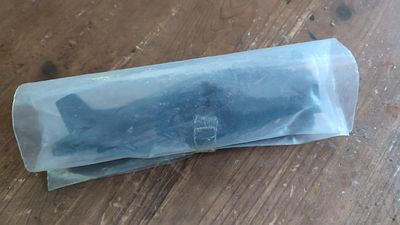
My decals were a hotch-
Top right: If it had actually come in one of these early boxes, I probably wouldn’t have built it!
Left: But in fact it came in a dirty poly bag full of bits. Rummaging in boxes full of unloved anonymous kits like this, trying to spot that hidden gem, used to be one of my favourite model show activities.
Below: Some of the many other boxes in which this kit has been sold.
Link to more Fleet Air Arm aircraft on my Flight Deck pages
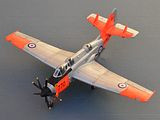
Part 2
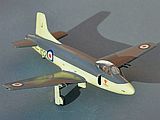
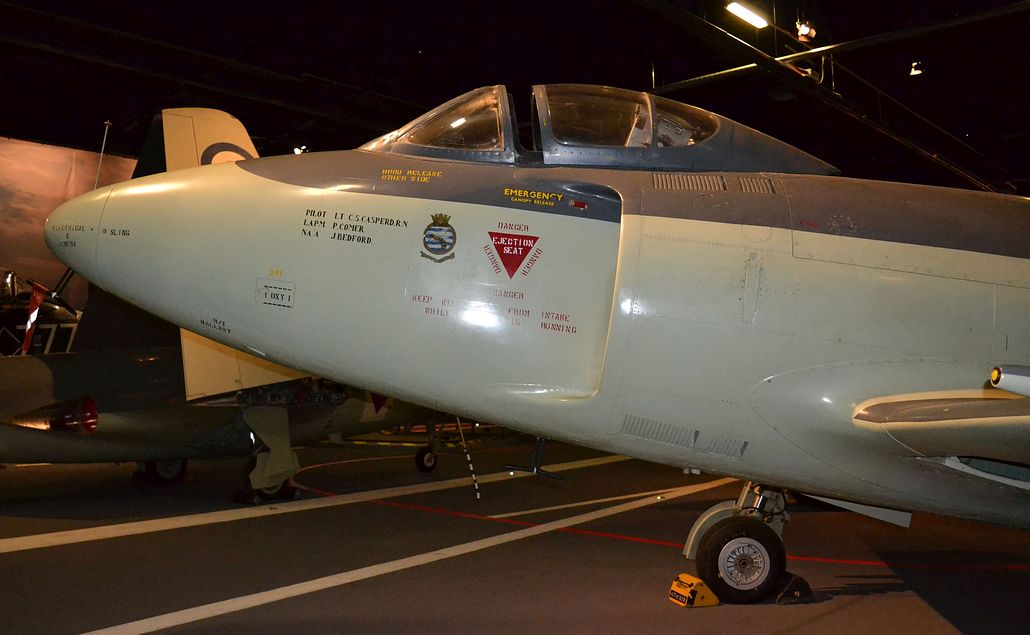
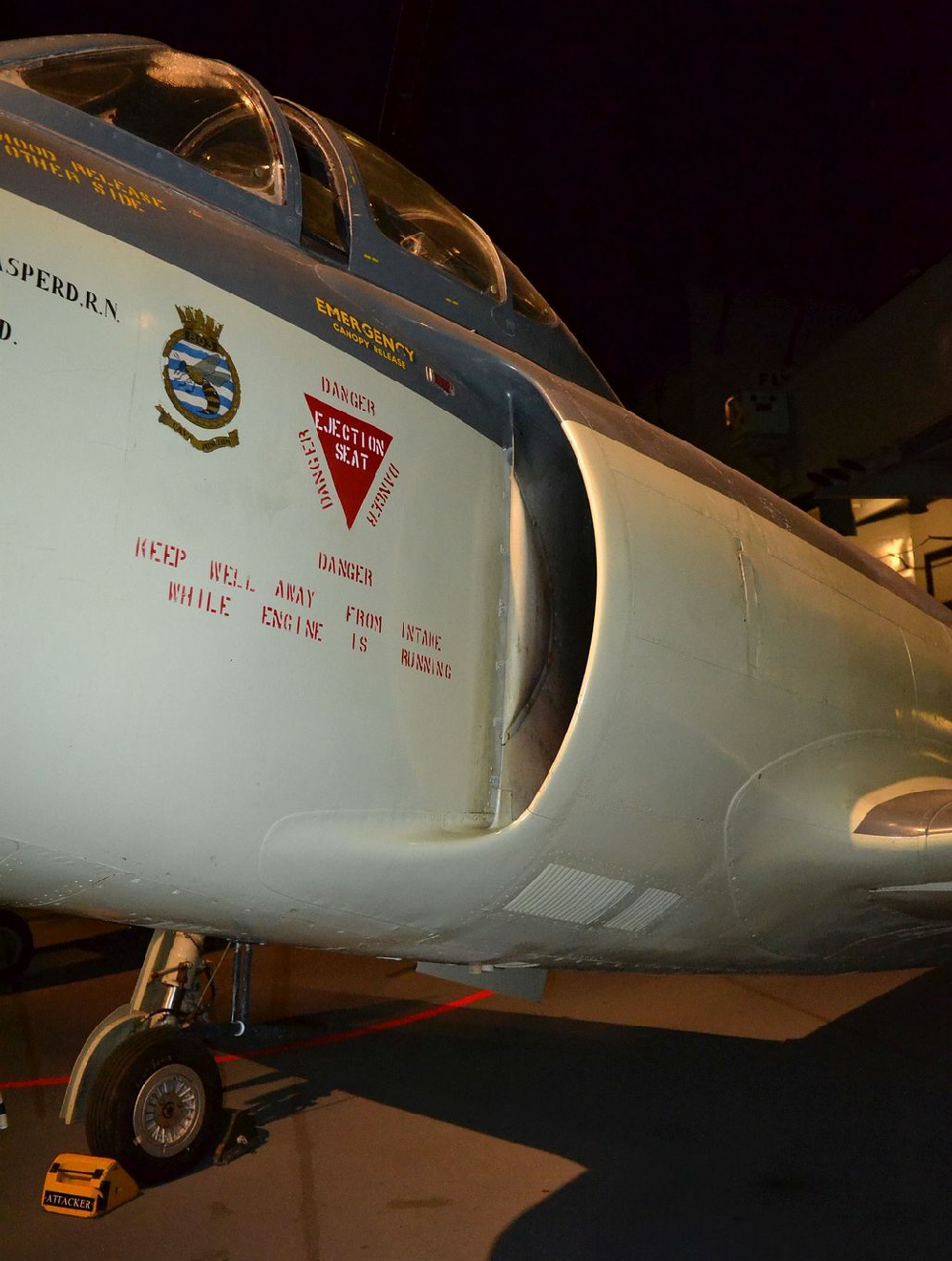
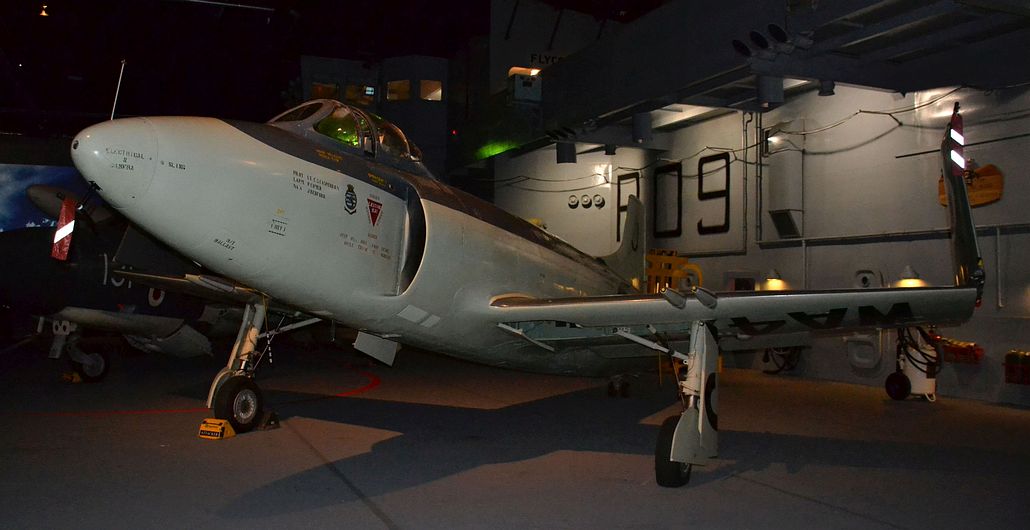
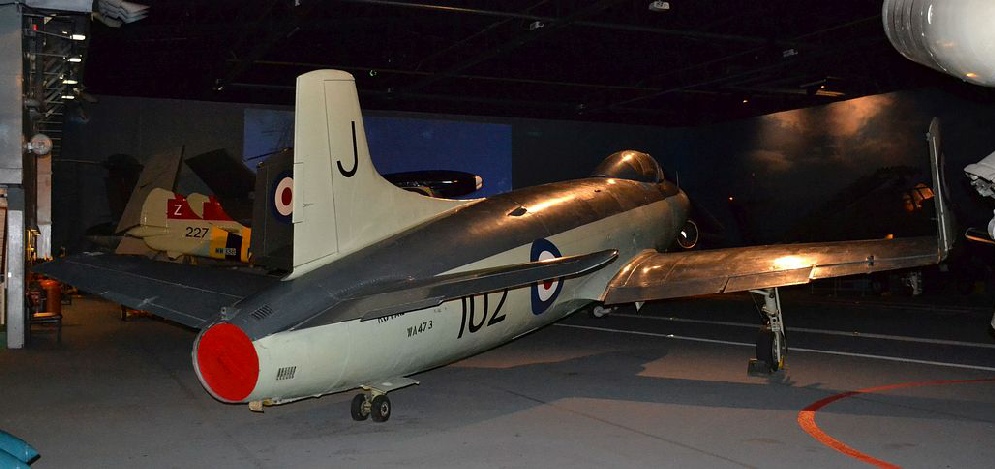
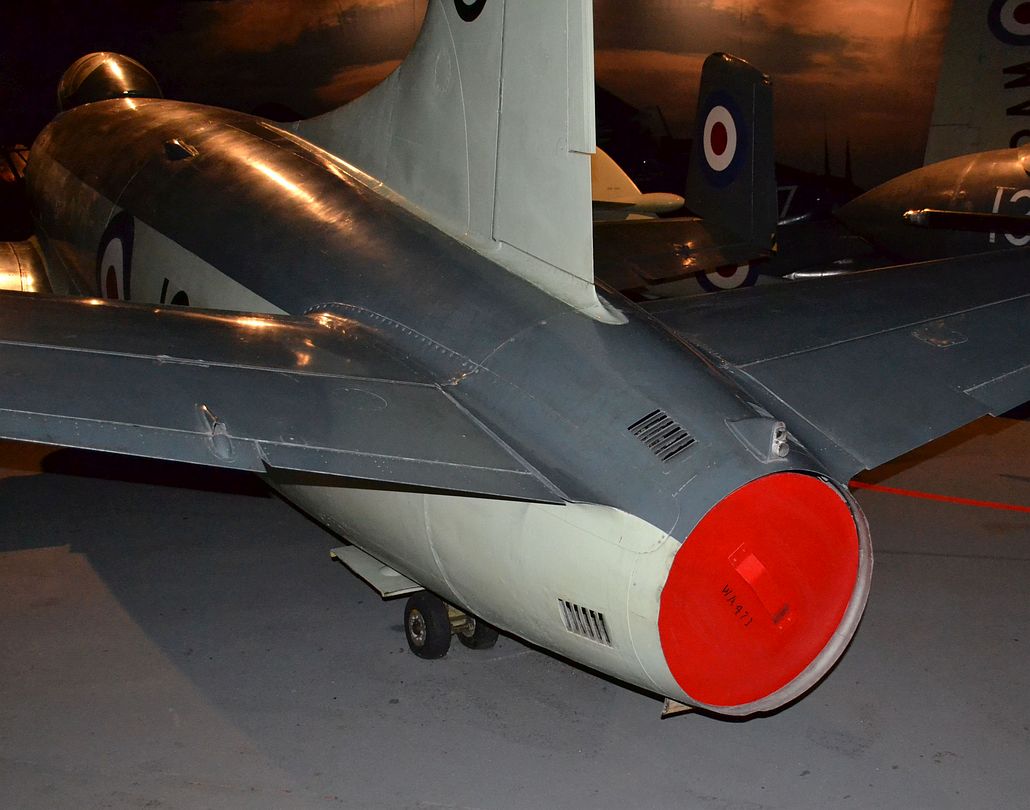
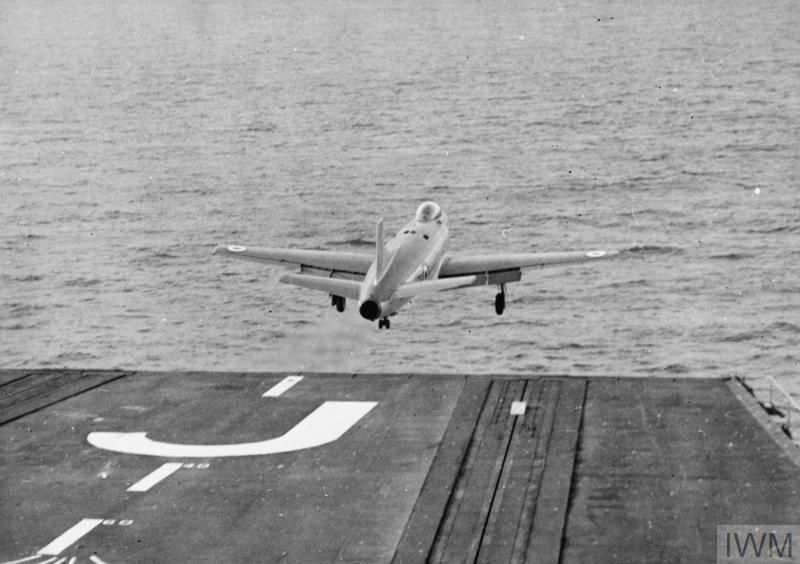
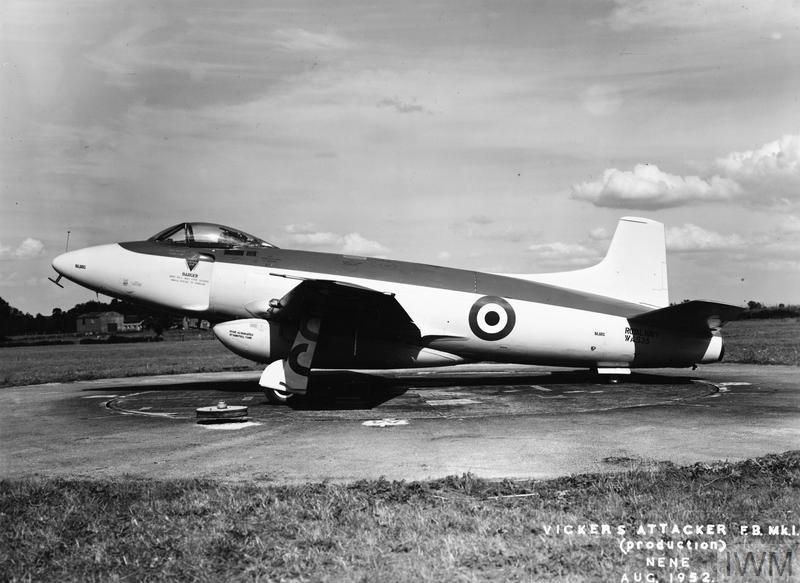
Above: © IWM A 32016A -
Below: © IWM ATP 23123C -
Below: some detail photographs of the Yeovilton aircraft. Note the later style framed canopy.
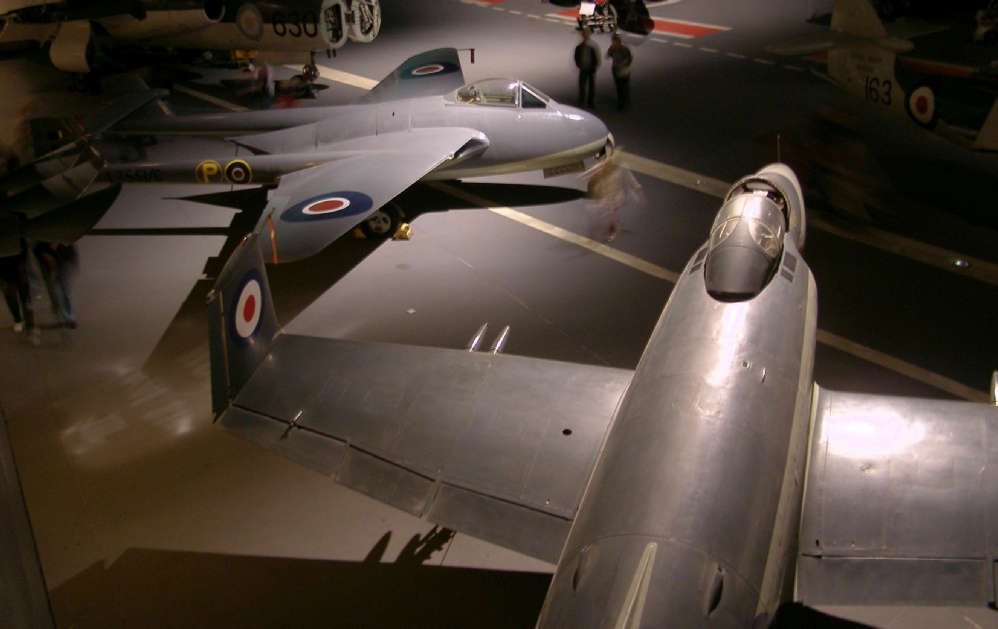
Below: Two icons of naval Aviation sit side by side at Yeovilton: the De Havilland
Sea Vampire that made the first ever deck landing and take-
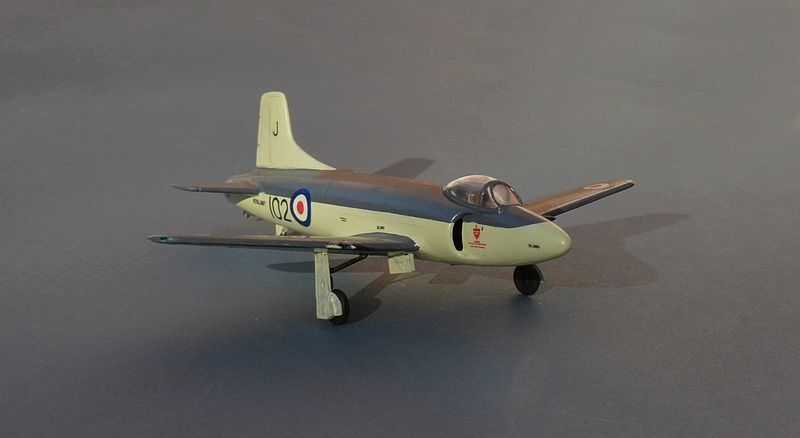

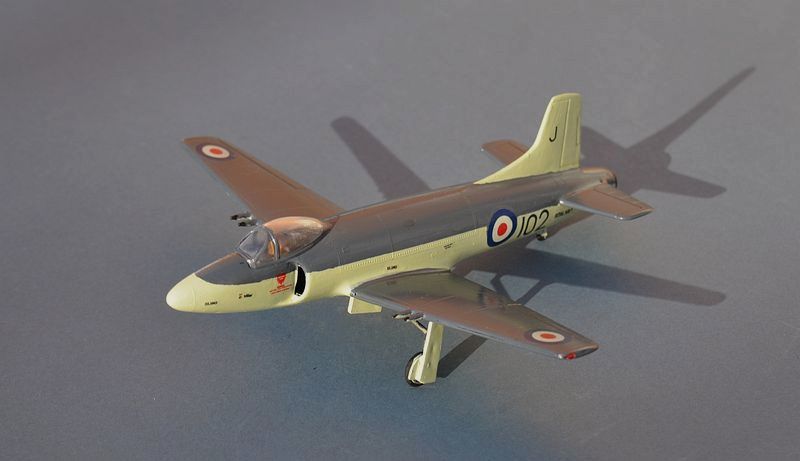
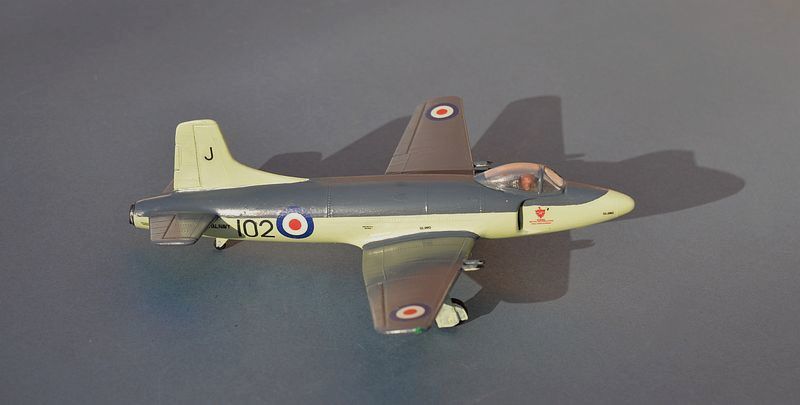

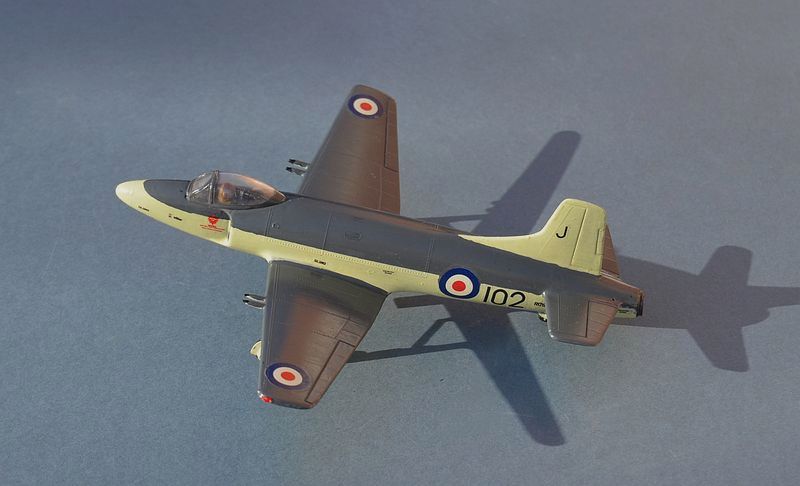
Above and below: An Attacker exhibited at the Fleet Air Arm Museum, Yeovilton.
I believe that this is the last remaining example of this aircraft type.
